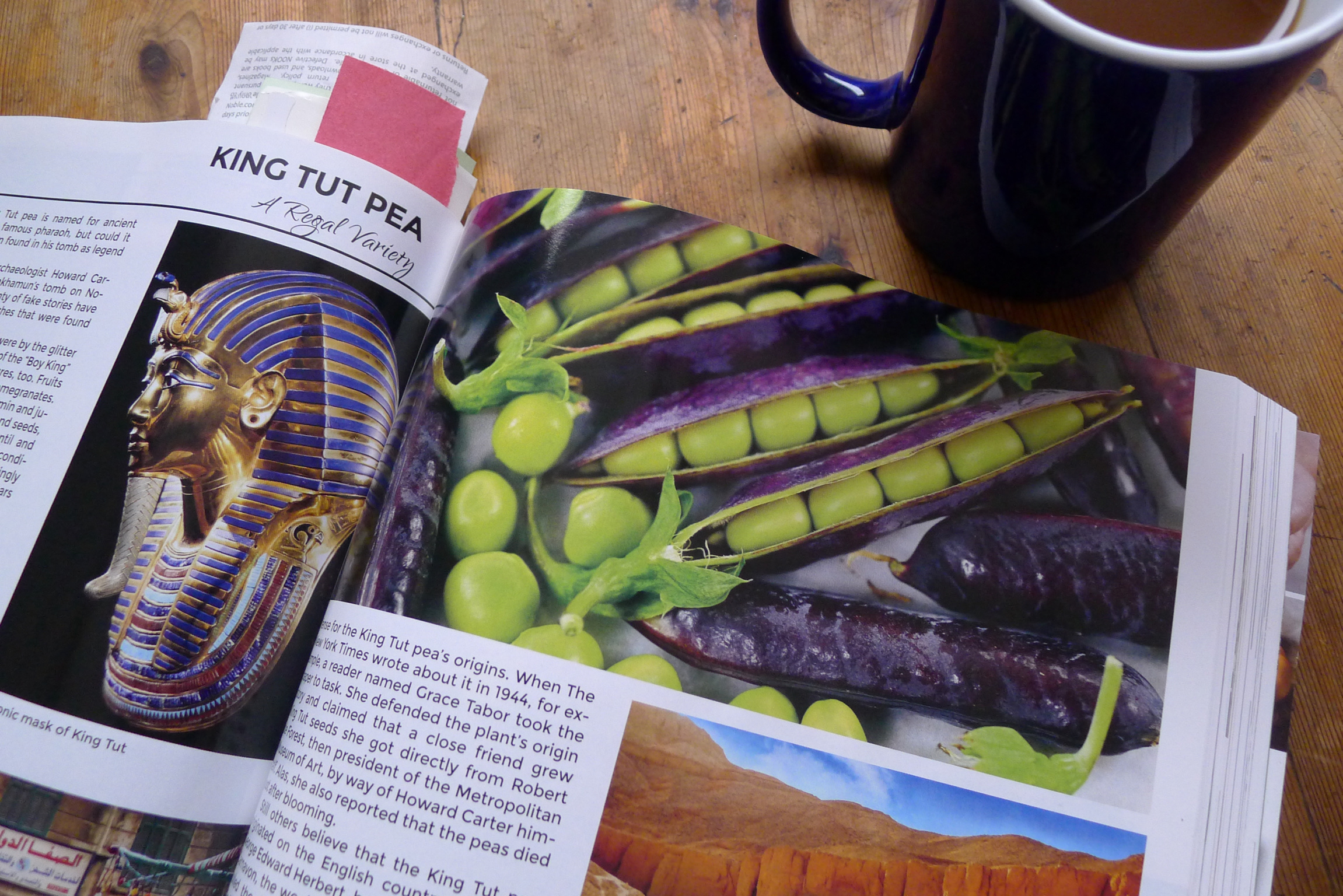Download: word.doc here | Image file here| Return to Editor’s Lounge

Caption: from the Baker Creek Heirloom Seed Company’s Whole Seed Catalog
My first seed catalog of 2020 arrived in late November. The timing could not have been better. Thanksgiving sticks a fork into the growing season, and ushers in a quiet time of rest, contemplation, hot beverages and reading material.
Gardening is a thoughtful pursuit, and seed catalogs are a way to garden in your mind through the winter. The tantalizing descriptions and flattering depictions of robust plants can offer dreams where reality falls short, while inspiring ambitious plans, some of them realistic.
According the National Gardening Association, 35% of American households grow some food, and gardening activity has doubled since 2008, when the organization began keeping track. Millennials are the fastest growing demographic in this trend. Not surprisingly, there is a seed catalog to match every gardener these days, from latte-sipping community garden plot worker to leather-handed cowgirl.
There is the whimsical nostalgia of the Fedco catalog, with its line-drawn depictions of a garden world populated by gnomes behind lovage plants, and spade-wielding superheroes flying through edible solar systems. Many market growers prefer the no-nonsense approach of Johnny’s Seeds, streamlined and farmer-oriented, with the fastest delivery in the business.
If those two catalogs mated, their spawn would resemble the 2020 Baker Creek Heirloom Seed catalog that arrived this past November. It has that old timey feel of Fedco, the budding entrepreneurism of Johnny’s, and adds a passion to discover and share as many heirloom plant varieties and traits as it can. Especially, it would appear, the purple ones.
It’s a theme that’s common across the seed catalog world, but Baker Creek is hitting it especially hard, from the Sugar Stars phlox flowers featured on the cover, to featured blueberry- and lavender-hued representatives from almost every category fruit and vegetable. Purple Brussels sprouts, purple corn and purple asparagus. There are purple “greens” like mizuna, scarlet kale and blue kale; and plants so dark purple they are black — black radish, black Dakota popcorn, black garbanzo beans.
The catalog includes a purple ad for its larger and more comprehensive cousin, The Whole Seed Catalog, replete with a purple Hopi Black Dye Sunflower on the cover. Baker Creek’s Whole Seed Catalog is like a normal seed catalog on plant-based steroids, with information on 1,100 varieties of heirloom seeds, along with historical notes, cultivation tips, and endless seeds for thought, and a full spectrum of colors — not just purple. I picked up a copy at Barnes and Noble.
Flipping through, I noticed a photo of a gentleman happily eating what appeared to a a slice of raw squash. Tahitian Melon Squash, I learned, is so sweet you can eat it raw, and was an important crop in the heirloom seed movement. The squash and melon section alone was more than 33 pages long, and filled with multiple rabbit holes, like a history of Japanese squash, and the often overlooked category of warted pumpkins. Soon, the pages were coffee-stained and dog-eared, like a seed catalog is supposed to be.
Jere Gettle founded Baker Creek Seeds in 1998 when he was 17, in the Missouri Ozarks. He as an elfin look, like a character from the Fedco catalog, and is partial to plants that attract pollinators. I asked Gettle via email why his catalog is so purple.
”We have tried to increase all of our colorful varieties,” he said. “But especially the color purple.” High in anthocyanins — the antioxidants found in blueberries — as well as being just plain pretty, Gettle says, purple plants are his best-selling seed category: “People can’t get enough of the color purple.”
I asked him about some out-of-stock Peruvian black Maiz Morado corn, which grows more than 8 feet tall and produces long ears of beautiful and delicious shiny black kernels. It will be in stock by mid-January, Gettle assured me. And the website is updated in realtime .
I will be placing my Inca corn order then, and some others. Everyone in my family has marked a few pages, flagging the likes of Dragon Tongue beans, Golden Alexandria wild strawberries, Muncher cucumbers, MInnesota Midget Melons, and today’s featured seed: King Tut Purple Peas.
The origin of King Tut’s Purple Peas is hotly debated, with candidates in the UK, Egypt and Everett, WA. One thing everybody can agree on is this purple pea has been around a long time, and is a beautiful, delicious heirloom shelling pea variety. The purple pea pods are edible, if you want the extra anthocyanins, but not fleshy and juicy like a snap pea pod. But the peas themselves are gargantuan green spheres that seem to burst from the purple pea pods, and are the real treasures here. Whether you want to make a thick pea soup, or use your peas as a way to flick some green into whatever you are cooking, these verdant granules can infiltrate almost any dish.
My farmer friend Patti once taught me a cool trick for using peas as a gauge for how ready the garden is for planting. She sows peas as soon as the ground thaws. Every few days she plants a few more, and keeps planting them until eventually they start to sprout and grow. That is her green light for planting a bunch of other seeds and starts.
Be they for pink celery, yellow tomatillos, red melon, green spinach or blue kale, an order of seeds is like a box of Lucky Charms, but with more fiber. Seeds offer colorful winter dreams, and the possibility they might even come true.